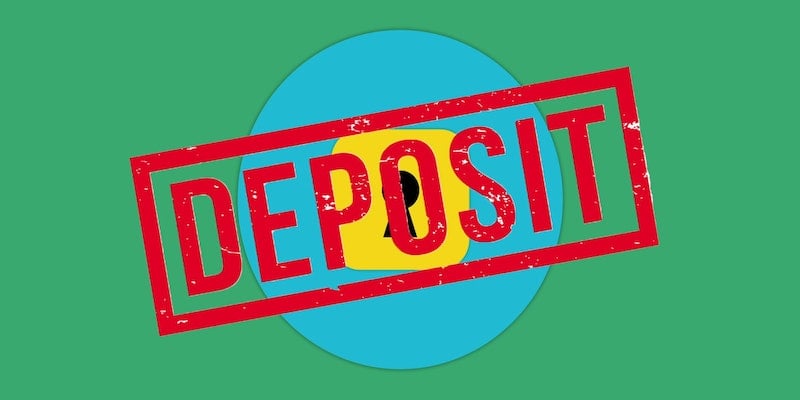Advertisement
Advertisement
What Is a Contingent Liability?
Jul 31, 2024 By Kelly Walker
Knowing a contingent liability can be essential when understanding today’s often complex financial landscape. A contingent liability refers to any potential debt or obligation dependent on the occurrence or non-occurrence of an uncertain event in the future.
These liabilities can introduce significant risk into a business’s financial picture, so having a firm grasp on their implications and uses is important for all businesses seeking to manage their finances effectively.
In this blog post, we will discuss what constitutes a contingent liability, dive deep into its use cases and implications, and provide some tips on taking action if your business deals with these obligations.
What is a contingent liability, and what are some examples
A contingent liability is an obligation that may or may not be owed by a business in the future, depending on the result of an uncertain event. These obligations can arise from contracts, employment agreements, environmental liabilities, tax disputes, legal judgments, and other similar sources.
Examples of contingent liabilities include pending lawsuits or potential insurance claims still waiting to be resolved. It is important to note that contingent liabilities must be considered when preparing financial statements as they represent a potential obligation or debt that may affect the business’s future cash flow.
How can you tell if a contingent liability will become an actual liability
To determine if a contingent liability is likely to become an actual liability, businesses must assess whether the event triggering the contingent liability is probable. If the event is deemed unlikely, it is unnecessary to consider it a current liability, and its effect on future cash flow can be disregarded.
However, the event is likely to occur. In that case, the contingent liability should be counted as a current liability, and its potential impact on future cash flow should be considered. Additionally, any uncertainty surrounds the event triggering the contingent liability.
In that case, businesses may consider setting aside funds to protect themselves against any unforeseen expenses that may result from it occurring.
What are the consequences of a company having contingent liabilities on its financial statements

Contingent liabilities on a company’s financial statements can significantly negatively impact it. This is because the potential for these obligations to become actual liabilities will reduce the amount of cash available for other operations and investments, which can lead to decreased profits or even bankruptcy.
It can also affect the overall value of the company’s stock, as investors are unlikely to consider the potential impact of contingent liabilities when assessing the firm's value. Finally, it can also lead to greater scrutiny from regulators or creditors who may be wary of a company with significant exposure to contingent liabilities.
How can companies protect themselves from potential contingent liabilities
To protect against potential contingent liabilities, businesses should actively monitor and assess their contracts, legal obligations, and potential risks. Additionally, companies should regularly review their insurance policies to ensure they are up-to-date and provide adequate protection.
It is also important for businesses to create a reserve fund to mitigate the financial impact of any unexpected liabilities that may arise. Finally, businesses should seek professional advice when dealing with large or complex contingent liabilities to ensure they take the necessary steps to protect themselves.
What should you do if you're faced with a potential contingent liability
If you face potential contingent liability, taking the necessary steps to protect yourself and your business is important. This may include reviewing your contracts and insurance policies to ensure that they provide adequate protection in case the triggering event occurs.
It can also be beneficial to seek professional advice from an accountant or lawyer to assess the potential risk of contingent liability and determine what steps should be taken to protect against it. Additionally, businesses may create a reserve fund to mitigate the financial impact of any unexpected liabilities that may arise.
Finally, suppose the event triggering the contingent liability is likely to occur. In that case, it should be counted as a current liability on the business's financial statements, and its potential impact on future cash flow should be considered.
Are there any tax implications for companies with contingent liabilities

Yes, companies with contingent liabilities may be subject to certain tax implications. Depending on the type of liability and its triggering event, businesses may have to report the contingent liability as a current or deferred tax expense.
In some cases, businesses may also be required to make estimated payments if the liability is deemed likely to occur within the same fiscal year or if the liability exceeds a certain amount. It is advisable for businesses to seek professional advice to determine the potential tax implications of any contingent liabilities that they may have.
How should companies account for their contingent liabilities
Companies should generally account for their contingent liabilities following Accepted Accounting Principles (GAAP). Generally, contingent liabilities should be disclosed in the notes to the financial statements and can be reported as a current or deferred liability, depending on the likelihood of their occurrence.
Additionally, if the potential impact of a contingent liability is deemed material, it may have to be reported as an estimated expense. Businesses need to seek professional advice when dealing with contingent liabilities to ensure that the accounting for them is done correctly and accurately.
What are the benefits of reporting contingent liabilities?
Reporting contingent liabilities gives a company greater transparency and can help improve its overall financial health by giving investors and other stakeholders an accurate picture of its financial position.
Additionally, reporting contingent liabilities can help protect the company against potential claims and litigation in the future. Finally, a company can ensure its accurate and up-to-date financial statements by properly accounting for contingent liabilities and recognizing associated risks.
This, in turn, will enable it to make more informed decisions regarding its business operations and ensure compliance with relevant accounting standards.
Are there any other measures companies should take when dealing with contingent liabilities?
Yes, in addition to properly accounting for their contingent liabilities, companies should take the necessary steps to mitigate the associated risks. This may include reviewing their contracts and insurance policies to ensure sufficient protection if the liability is triggered.
They should also consider establishing a reserve fund to help cover any potential costs arising from the liability. Finally, companies should regularly review their contingent liabilities and update their financial statements accordingly.
This will help ensure they remain compliant with relevant accounting standards and adequately prepared for surprises.
FAQS
What is the difference between provision and liability and contingent liability?
A provision is an amount set aside to cover potential or existing liability, while a liability is an existing debt the business has legally incurred. A contingent liability, on the other hand, is a potential obligation that may become due depending on certain events.
Is contingent liability a current liability?
Reporting a contingent liability as a current or deferred liability depends on the likelihood of its occurrence. It should be reported as a current liability if it is deemed likely to occur. If there is no immediate expectation for the liability to be triggered, it can be reported as a deferred liability.
Is contingent liability a long-term liability?
No, contingent liabilities are not typically reported as long-term liabilities. Depending on the likelihood of it occurring, it should be reported as either a current or deferred liability in the notes to the financial statements.
Conclusion
In conclusion, a contingent liability is an obligation or potential liability that will be realized only if a certain event or condition occurs. It can represent obligations associated with leases, purchase agreements and other contractual relationships.
Contingent liabilities can increase uncertainty for all parties involved, but it’s important to remember that these are not recorded as actual debts until they become binding obligations.
On this page
What is a contingent liability, and what are some examples How can you tell if a contingent liability will become an actual liability What are the consequences of a company having contingent liabilities on its financial statements How can companies protect themselves from potential contingent liabilities What should you do if you're faced with a potential contingent liability Are there any tax implications for companies with contingent liabilities How should companies account for their contingent liabilities What are the benefits of reporting contingent liabilities? Are there any other measures companies should take when dealing with contingent liabilities? FAQS What is the difference between provision and liability and contingent liability? Is contingent liability a current liability? Is contingent liability a long-term liability? Conclusion
Selling Shares Before the Ex-Dividend Date: Maximizing Returns

Best Buy's Expanding Portfolio: Top 3 Subsidiary Companies

Difference between Fixed and Variable Deposit Interest Rates

What Are Minimum-Interest Rules?

Best Nanny Payroll Services

How Traders Use CCI (Commodity Channel Index) to Trade Stock Trends

Are You a Trend Trader or a Swing Trader?

Understanding Single-Premium Life Insurance: A Comprehensive Guide



